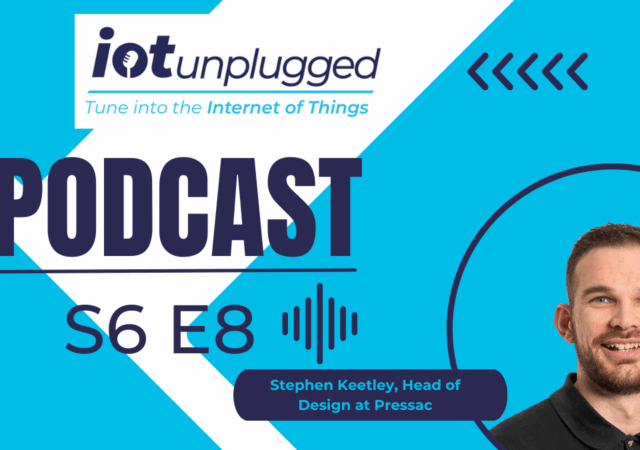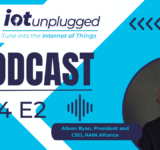5G is maturing as a technology, according to Gilles Garcia, Senior Director, Data Center and Communications Group at AMD, as he examines the state of its rollout in Europe.
According to Ericsson, there will be over one billion 5G subscribers worldwide by the end of 2022, and the technology is scaling faster than any previous mobile generation. The diversity of the use-cases 5G supports – from connecting the unconnected to industry 4.0 – makes it a compelling investment opportunity for private sector and government stakeholders. However, questions have been raised as to whether European countries are maximising the 5G opportunity, igniting a discussion around how to accelerate 5G investment. The GSMA’s Mobile Economy Europe 2022 report indicates that 5G network coverage across Europe will rise to 70% by 2025 – up from 47% in 2021. Yet compared to countries such as South Korea and USA, this is relatively slow rate of adoption. The report forecasts these countries will achieve 98% coverage and above in the same timeframe. So, what more can be done to accelerate 5G deployment in Europe, which at its current rate will leave almost a third of the population without 5G coverage by 2025?
Policy to drive investment
Policy making at both a domestic and continental level is a powerful tool for driving technology adoption forwards. The European Commission has historically been a driving force of this, and in 2021 published its Digital Decade policy programme, which set objectives for 2030 to spearhead Europe’s digital transformation.
Moreover, domestic governments have a major role to play in creating an environment that enables network transformation. One of Europe’s frontrunners in terms of 5G deployment, Denmark, is an example of this. The European Commission’s Digital Economy and Society Index (DESI) 2022 ranks Denmark as the second highest country in terms of digital readiness – still over 10% short of its Digital Decade target of 80% by 2030. Part of this relative success is owed to the comprehensive action plan set out by the Danish Energy Agency in 2019, which focused on how the country would address auctions of 5G frequency, network rollout, regulatory frameworks, and prominent use-cases. While spectrum availability has stalled progress even in Europe’s most successful countries, ambitious and considered policies can significantly impact transformation.
Policy alone, however, cannot bridge the gap. The bigger opportunity is in collaboration between mobile operators, wireless technology manufacturers, the EU, and national governments. Investment needs to continue at both a domestic and continental level to ensure mobile ecosystems are “5G-ready” and to create a more open market for innovation.
An open innovation ecosystem
At present, the European mobile operator landscape suffers from fragmentation. Services across 44 European countries are delivered by hundreds of operators – some with international presence and others offering very localised coverage. This can have a positive impact – increasing competition and accelerating innovation – but to do so there must be a culture of collaboration or ‘co-opetition’ that prioritises the quality of service at an industry level. In most cases, smaller, more local operators have less capital to invest in the R&D, trials, and labs that drive 5G innovation. Meanwhile larger operators are investing heavily in all of these.
To achieve the aims set out in the Digital Decade plan and empower the mobile industry to accelerate 5G deployment across Europe, collaboration between large and small operators is vital. Strategic partnerships between telcos where smaller operators can access more of the R&D facilities that exist in their region will stimulate innovation. Shared resources and goals between industry players have the potential to reduce cost of deployment, cost per user, and find new ways to overcome technical challenges that delay deployment. Policy makers may have a role to play here in supporting shared R&D centres that any vendor can access to create or test new solutions and services.
At the heart of this opportunity is Open-RAN – an open radio access network architecture with the aim of improving network flexibility, improving competition, and enabling innovation. The O-RAN Alliance brings together operators and telecommunications equipment manufacturers to create a multi-vendor, interoperable ecosystem to deliver open interface specifications. Each member focuses on a specific system or interface aligned to their expertise. Every vendor takes responsibility for the delivery of the complete solution – whether it’s the 5G Core network, baseband units, or silicon chips. This is the essence of the O-RAN Alliance and Open-RAN.
Concepts such as this and a culture of co-innovation among vendors increases the market opportunity for players focusing on more specific areas of telecommunications infrastructure. This can lead to rapid deployment of new solutions such as adaptable reference architectures, low power wired and wireless solutions, enhanced data processing and cloud solutions, which can be deployed on any network.
Combining robust policy and a renewed focus on introducing new, flexible solutions to the ecosystem can reduce challenges around vendor lock-in, and enable service providers to create best-of-breed infrastructure that increases network coverage and speed, while reducing cost and power consumption. This will be key as governments and vendors across Europe look to accelerate 5G deployment and increase coverage levels in the coming years, to provide as many users as possible with the benefits of next-generation connectivity.
There’s plenty of other editorial on our sister site, Electronic Specifier! Or you can always join in the conversation by commenting below or visiting our LinkedIn page.










